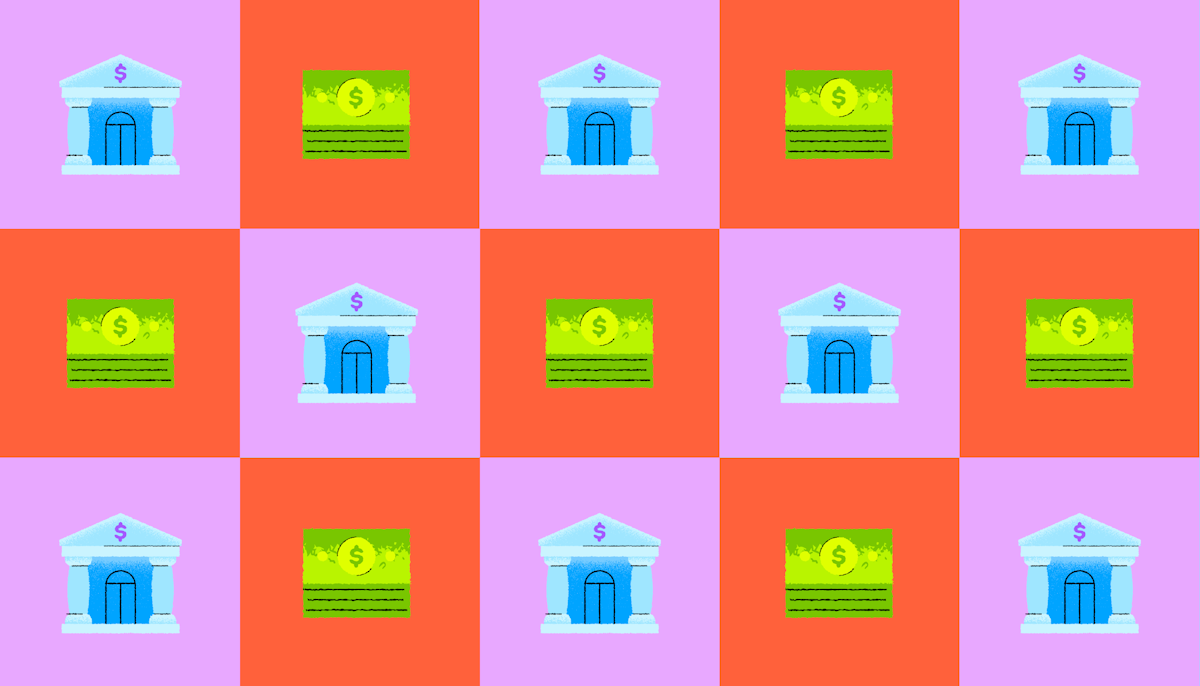Financial aid •
December 28, 2021
University of California, San Diego financial aid: a complete guide
Do you want to attend UCSD, but you’re wondering how you’ll pay for it? Read our complete guide on UCSD financial aid.
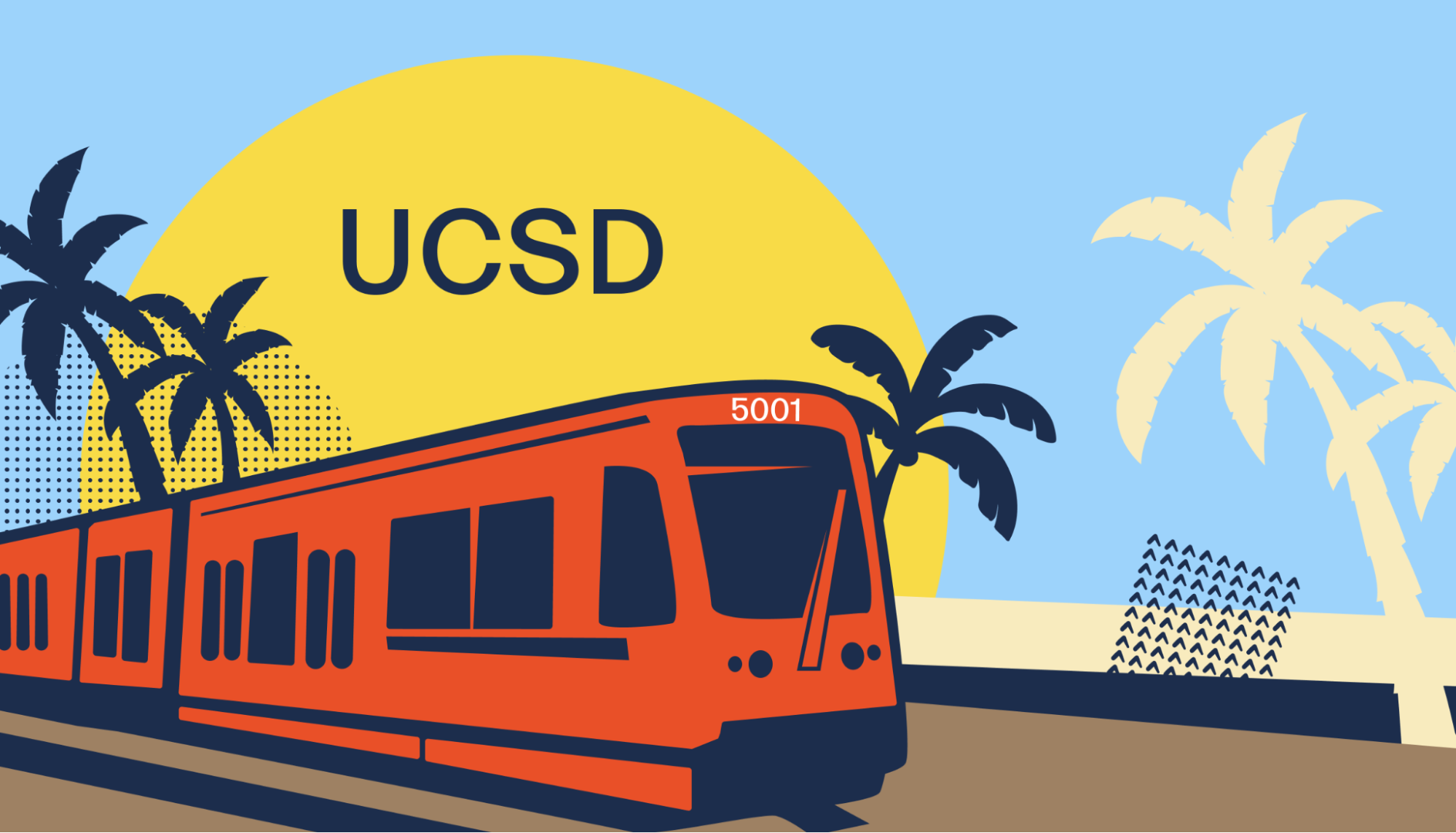
Located in San Diego, California, the University of California, San Diego (UCSD) is one of the top 15 research universities in the world! It has a highly competitive admission process and offers a world-class education in dozens of different fields.
If you’re interested in applying to UCSD but want to know more about how you’ll pay for school, we’ll break it all down for you.
A snapshot look at the University of California, San Diego
The University of California, San Diego is a public university that is part of the University of California system.
The school is one of the top research universities in the world, receiving more than $1 billion in research funding each year and boasting more than 160 National Academy memberships among its current and former faculty.
Students at UCSD can choose to study a wide variety of disciplines, including the arts and humanities, biological sciences, public health, engineering management, global policy, medicine, pharmacy, oceanography, and social sciences.
Outside of their studies, students can enjoy UCSD’s many extracurricular activities, including sports at the school’s 9 sports facilities. Surfers will enjoy the nearby beaches that helped UCSD earn the title of top surfing school in the nation from Surfer Magazine.
Ranking: 34th nationally
Size: 31,842
Demographics: 50% male, 50% female
Tuition: $14,733 for in-state students, $44,487 for out-of-state students
Acceptance rate: 38%
Average GPA of accepted student: 4.15
Key dates and deadlines (2021)
Application: November 30
Financial aid deadlines: March 2
A look at scholarships offered by the University of California, San Diego
If you’re trying to figure out how you can pay for college, scholarships are one of your best options.
Scholarships are simply free money that you can use to pay tuition and other fees. Unlike with loans, you don’t usually have to pay a scholarship back.
UCSD has a dedicated scholarship website that outlines all of the scholarship programs available based on whether you’re a first-year, transfer, or continuing student. They also have programs for students looking to study abroad.
The site also includes scholarships from some outside organizations.
One unique scholarship that UCSD offers is the Blue and Gold Opportunity Plan. This program is available to California residents whose total family income is less than $80,000 per year.
If you’re eligible, your tuition and fees will be fully covered by scholarship and grant funds! Those with greater need can get additional funding to help pay for housing, textbooks, and other costs.
Outside of UCSD, you should keep an eye out for scholarship opportunities in your local community. Many community groups and businesses have scholarship programs to help students pay for the cost of school.
These smaller scholarships can still help you get hundreds or thousands of dollars to put toward the cost of college.
For more on which scholarships you can apply for and how we can help, check out our financial aid tips and tricks.
Student loans
Once you’ve exhausted the available scholarships, you can look into taking out a student loan. Borrowing money lets you invest in your future by paying for your education, but you have to be ready to pay back the money you borrow, plus interest.
UCSD’s website outlines the many loan programs that its students can take advantage of, including the California Dream loan. These loans are available to in-state students and offer up to $4,000 per year.
If you’re borrowing money for college, one of the first places to look is the federal government. You can get Federal Direct loans, a type of federal financial aid, in either subsidized or unsubsidized forms.
Subsidized loans don’t build interest while you’re in school. Unsubsidized loans do, so max out your subsidized loans before choosing an unsubsidized one. Both types of federal loans are eligible for programs like public service loan forgiveness and income-based repayment.
To learn more about this, you can read our guide on how student loans work.
Once you’ve maxed out your federal loans, you can also turn to private student lenders. Many banks and loan companies offer student loans to college attendees.
The drawback is that private loans are much more expensive than federal loans. They also don’t qualify for the same programs, like income-based repayment.
For more on finding the right student loan for you, work with a Mos advisor that can help you find the best loans.
FAFSA
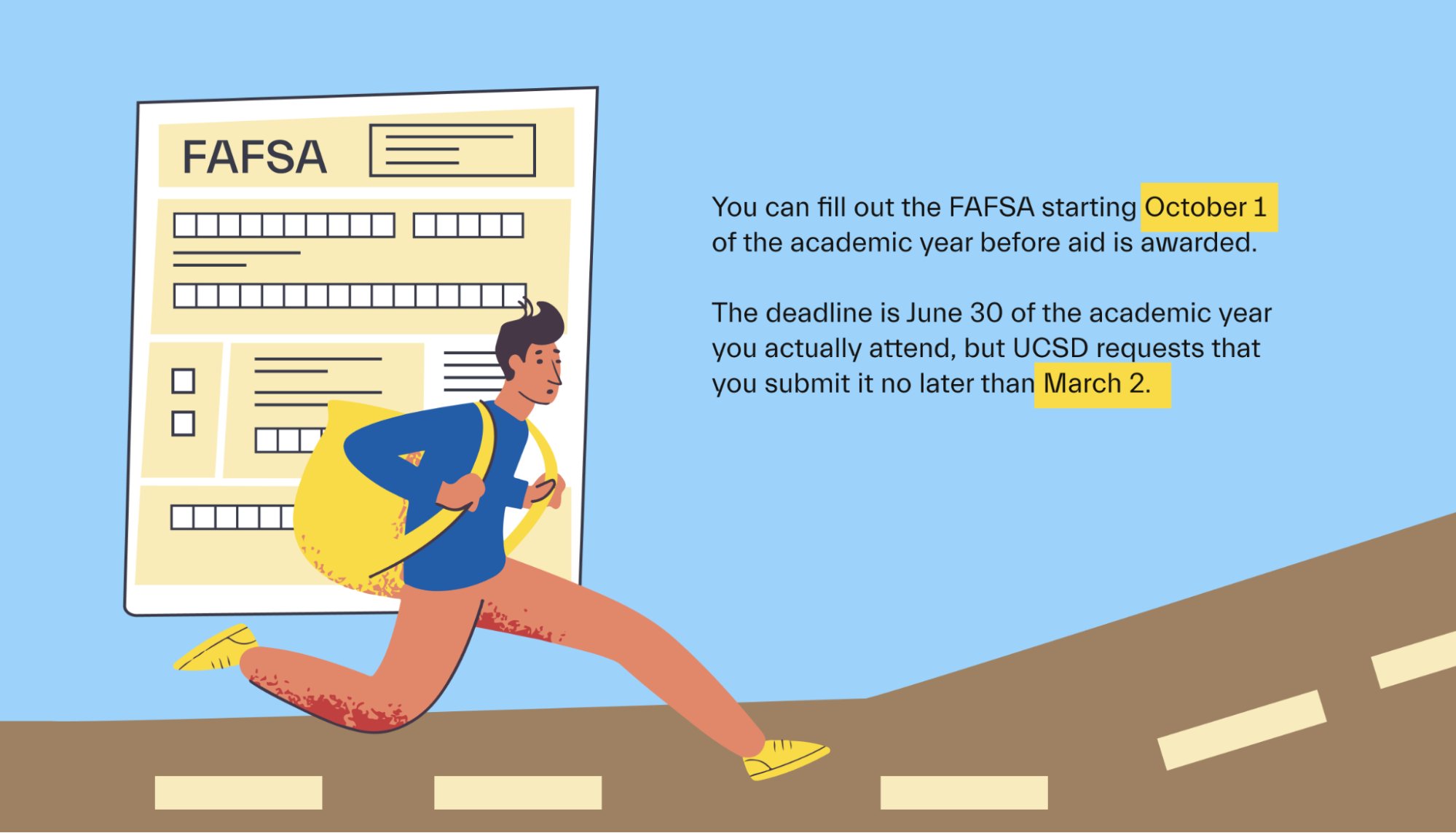
If you’re applying to college or about to start another year, the Free Application for Federal Student Aid (FAFSA) is one of the most important documents you’ll ever have to fill out.
The FAFSA is a financial aid form that many colleges and the federal government use to help decide how much financial aid you’re eligible for.
When you fill out the FAFSA, you and your family will have to answer some simple questions, like the amount you’ve saved for school and your annual family income. Using this information, the government calculates your expected family contribution (EFC) to the cost of school.
Based on your EFC, the government will decide whether to offer you a Pell Grant or other scholarship aid. It also influences your eligibility for subsidized and unsubsidized loans. UCSD will also use the FAFSA to determine what aid it offers to you.
You can fill out the FAFSA starting October 1 of the academic year before aid is awarded. The deadline is June 30 of the academic year you actually attend, but UCSD requests that you submit it no later than March 2.
For more on applying for FAFSA, including important dates and how to make sure your application is successful, download the Mos app.
The University of California, San Diego financial aid FAQs
These are some of the most frequently asked questions about UCSD’s financial aid.
What is the University of California, San Diego’s cost of attendance?
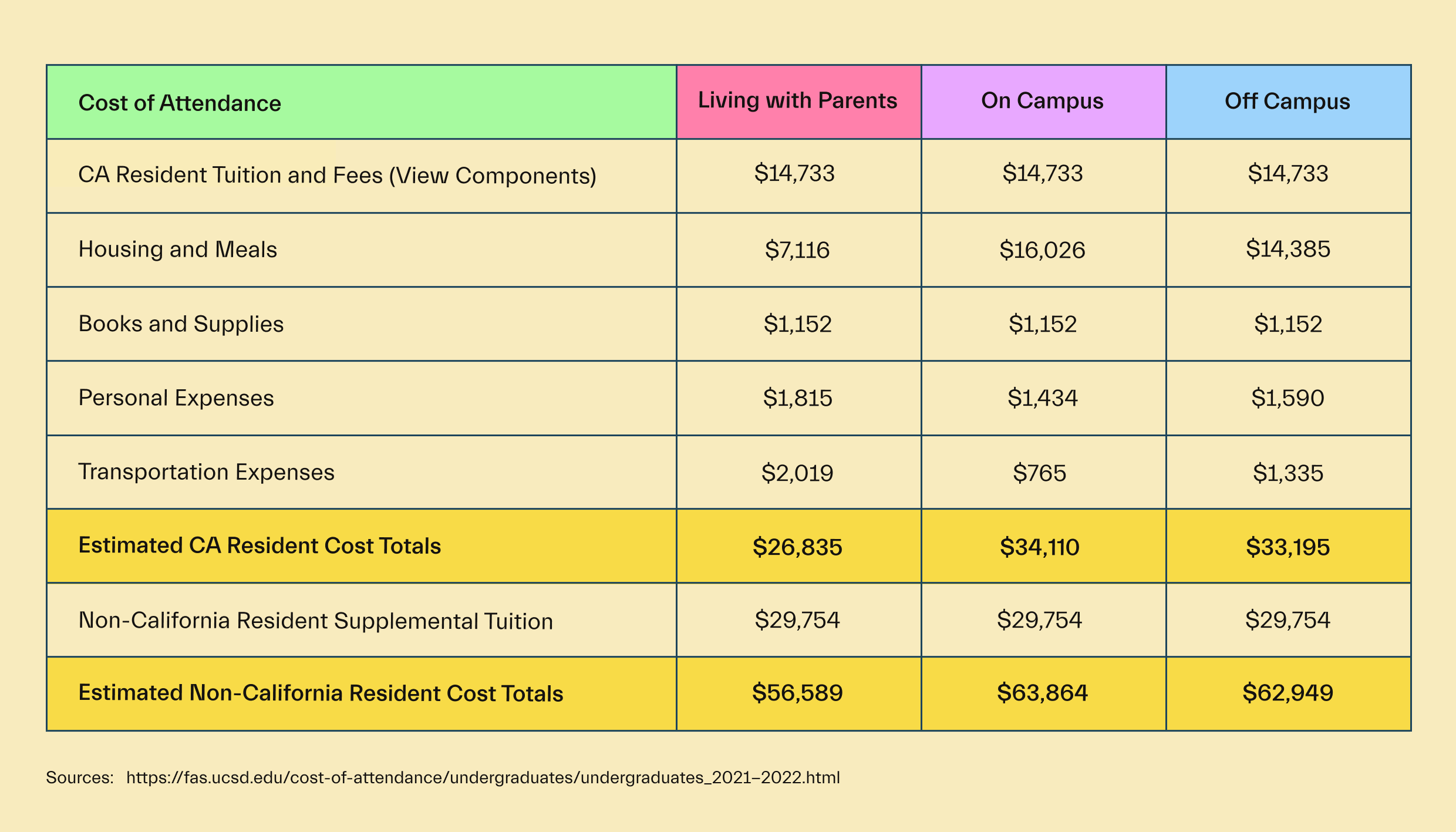
The full cost of attendance at UCSD ranges from $26,835–$33,195 for in-state students. Of that amount, $14,733 is for tuition and fees, and the remainder covers housing, food, transportation, and supplies.
Out-of-state students pay an additional $29,754 per year, increasing their cost of attendance to $56,589–$63,864.
Do out-of-state students receive financial aid?
While out-of-state students at UCSD are not eligible for California’s financial assistance programs for residents, UCSD does offer some assistance to out-of-state students.
What are the eligibility requirements for the Blue and Gold Opportunity Plan?
The Blue and Gold Opportunity Plan is a scholarship opportunity for California residents that covers the full cost of tuition and fees at the University of California, San Diego.
To be eligible, students must meet these requirements:
Submit their FAFSA or California Dream Act application and Cal Grant GPA Verification form by March 2.
Be a California resident or meet in-state tuition eligibility requirements under AB 540.
Be in your first 4 years as a UC undergraduate student (first 2 years if you are a transfer student).
Meet other basic aid requirements, such as enrolling at least part-time and making satisfactory academic progress toward your degree.
Universities like the University of California, San Diego that you might be interested in
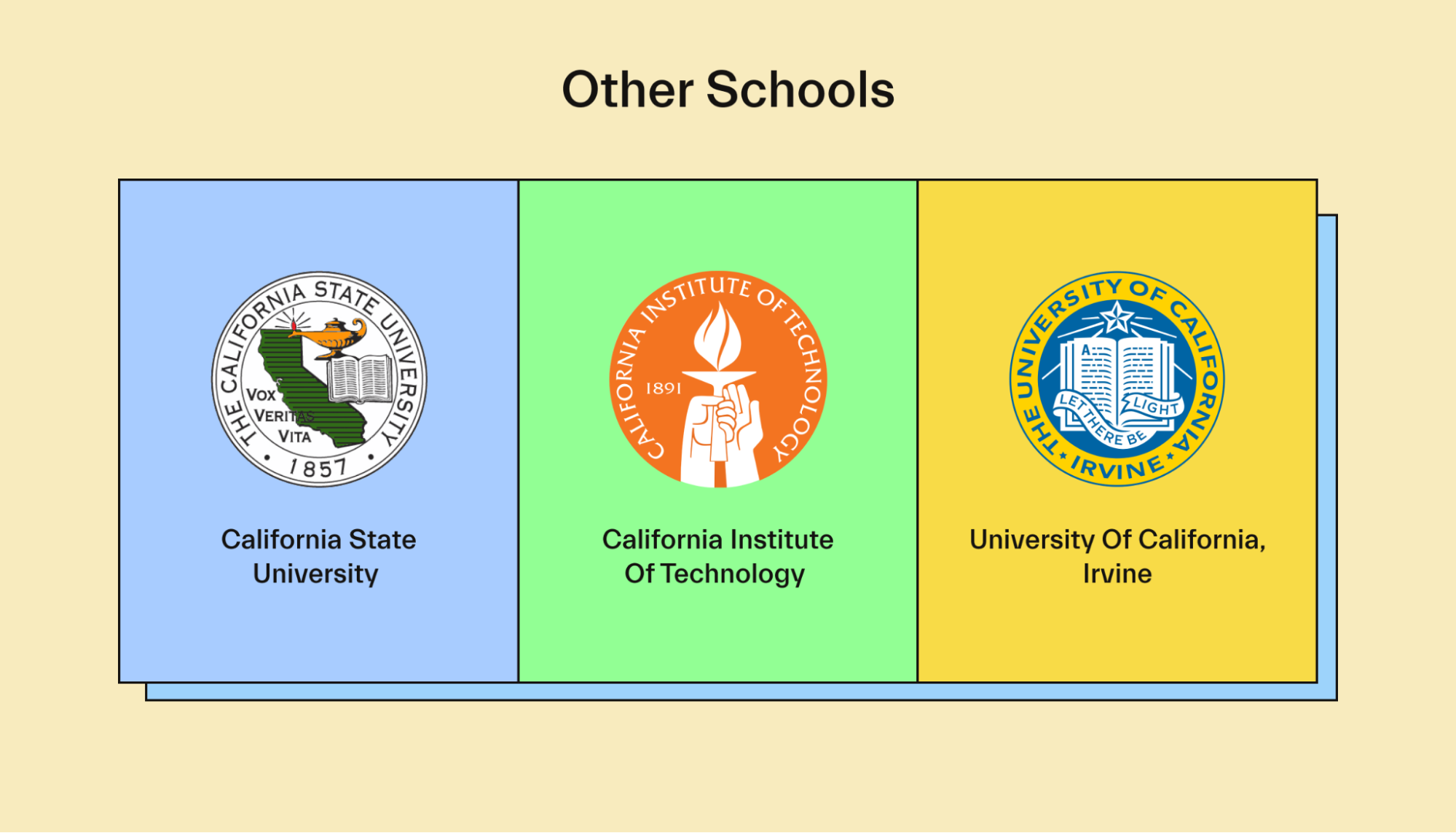
If you’re not sure whether the University of California, San Diego, is right for you, these alternatives might fit the bill.
California State University
Outside of the University of California school system, California has plenty of other college options.
The California State University system includes nearly half a million students studying dozens of subjects. You can choose from campuses in cities across the state, including San Jose, Chico, San Francisco, Sacramento, Long Beach, and Los Angeles.
California Institute of Technology
If UCSD appeals to you for the quality of its research, you might be interested in the California Institute of Technology, also known as Caltech.
Caltech enrolls 1,000 undergraduate students and 1,300 graduate students who work alongside its roughly 300 faculty members. The school emphasizes engineering and science, and it boasts more than 76 Nobel laureates amongst its current and former faculty, alumni, and other affiliates.
University of California, Irvine
The University of California, Irvine (UCI) might appeal to you if you’re interested in the UC system.
UCI is ranked as one of the top 10 public universities in the US and offers more than 80 different bachelor’s degree programs for students to choose from.
Conclusion
UCSD is a top research institution that offers a world-class education at a reasonable price.
Many California students will even be able to get an education for free thanks to the school’s Blue and Gold Opportunity Plan, making it well worth considering if you live in California.
If you’re looking for the best way to pay for school, Mos can help. With Mos, you can get help negotiating for more financial aid, apply for hundreds of scholarships and grants with ease, and even get help writing scholarship essays to help you earn extra funding to pay for tuition. Explore memberships to find the best plan for you.
Let's get
your money
- Get paired with a financial aid expert
- Get more money for school
- Get more time to do you




